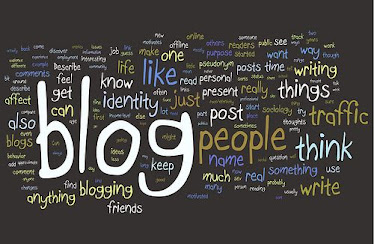What is E-commerce?
In a world where we can order dinner, book a flight, buy a book, and even attend therapy — all with a few taps on a screen — the word "e-commerce" surrounds us daily.
But what is e-commerce, really?
Is it just online shopping? Is it just about money and convenience?
Or is there something deeper beneath the surface?
Let’s explore what e-commerce is, what it means, and why it’s more than just a business model — it’s a quiet revolution reshaping how we live.
E-commerce Defined Simply
E-commerce (short for electronic commerce) refers to the buying and selling of goods or services over the internet.
It includes:
-
Online stores (like Amazon, Shopify stores)
-
Service-based websites (like Fiverr or online coaching)
-
Subscriptions (Netflix, digital courses)
-
Digital products (ebooks, software, music)
-
Mobile commerce (buying through apps)
But beyond this definition lies something more meaningful: a new way to connect needs with solutions, without borders or barriers.
The Human Side of E-commerce
It’s easy to focus on the numbers, traffic, conversions, and checkout pages.
But behind every click:
-
There’s a person choosing your product over thousands.
-
There’s trust being exchanged.
-
There’s a small moment of decision.
E-commerce is not about selling things. It’s about serving people — at scale.
Whether it’s a mom ordering baby clothes at midnight, a student buying an online course, or a remote worker subscribing to a productivity tool, e-commerce is about solving problems — one transaction at a time.
E-commerce is Opportunity, For Everyone
One of the most beautiful things about e-commerce is how democratic it is.
You don’t need to rent a storefront.
You don’t need to be born into wealth.
You don’t even need a warehouse.
If you have a product, a service, or even an idea — and the willingness to learn — you can build an e-commerce business from your bedroom.
That’s why e-commerce has empowered:
-
Students to become sellers.
-
Stay-at-home parents to become entrepreneurs.
-
Artists to become business owners.
-
Creators to become educators.
It’s not just about access to products.
It’s about access to possibility.
The Evolution of E-commerce
E-commerce began as a simple idea: buying online.
But today, it’s a complex and dynamic system that includes:
-
B2C (Business to Consumer): Online stores like Amazon, Shein, or Nike.
-
B2B (Business to Business): Wholesale platforms like Alibaba.
-
C2C (Consumer to Consumer): Marketplaces like eBay or Facebook Marketplace.
-
DTC (Direct to Consumer): Brands selling without intermediaries — like Gymshark or Glossier.
-
Social Commerce: Shopping directly on platforms like Instagram, TikTok, or Pinterest.
E-commerce is no longer a trend — it’s the default.
E-commerce is Experience, Not Just Efficiency
Yes, speed matters. Convenience matters. But modern e-commerce goes further:
-
Beautiful packaging.
-
Clear product storytelling.
-
Personalized shopping journeys.
-
Friendly, responsive customer service.
People don’t just want to buy — they want to feel good about buying.
That’s why the most successful e-commerce brands invest in brand voice, aesthetics, trust, and transparency.
E-commerce is Changing the World — Quietly
Think about this:
-
E-commerce reduces the need for massive physical infrastructure.
-
It opens up global markets to local creators.
-
It promotes digital literacy and entrepreneurship.
-
It pushes traditional retail to innovate and evolve.
In many ways, e-commerce is redefining the global economy — not through loud disruption, but through steady transformation.
It’s shaping how we work, how we shop, how we sell, and how we dream.
E-commerce is Global, But Deeply Personal
While e-commerce connects billions across borders, it still comes down to a very intimate moment:
One person. One screen. One choice.
Whether you're a seller in Lahore or a buyer in London — it’s a human moment.
That’s what makes e-commerce so powerful: it scales without losing intimacy.
Great e-commerce doesn’t just ship products. It builds relationships.
Behind Every Order Is a Story
That fitness product you sold? It’s part of someone’s health journey.
That book you delivered? It might inspire someone’s next big idea.
That piece of jewelry? A gift for someone’s anniversary.
E-commerce becomes deeply meaningful when you realize:
You’re not just selling. You’re contributing to someone's life.
E-commerce is a Test of Patience and Perseverance
At first, traffic will be low.
Orders might not come.
Returns might feel like setbacks.
But those who succeed in e-commerce are not just tech-savvy — they are resilient.
They keep learning, keep improving, and keep showing up — because they believe in what they’re building.
E-commerce is Not Just for Big Brands Anymore
In the past, building a retail brand took:
-
Warehouses
-
Distribution chains
-
Massive ad budgets
Today, with just a laptop and a clear vision, anyone can build a brand.
That’s the beauty of modern e-commerce — it’s not about who’s big, it’s about who’s bold.
Sustainability in E-commerce Matters
As e-commerce grows, so does its responsibility.
Smart brands now ask:
-
Are we using eco-friendly packaging?
-
Can we reduce unnecessary returns?
-
Are we sourcing ethically?
In this way, conscious e-commerce is the future — one where profit and planet walk together.
E-commerce is a Canvas for Creativity
It’s not just business — it’s art.
Every product description, website design, unboxing experience, email — it’s all part of the story you tell.
You’re not just building a store.
You’re building a digital experience that expresses your values, voice, and vision.
Final Reflection: E-commerce is Human
Yes, it runs on technology.
Yes, it involves automation, algorithms, and analytics.
But at its heart, e-commerce is still about people:
-
People trying to make a living.
-
People trying to find what they need.
-
People trying to connect through something meaningful.
So whether you’re buying, selling, or learning — remember this:
E-commerce works best when it’s not just smart, but sincere.









.jpg)







